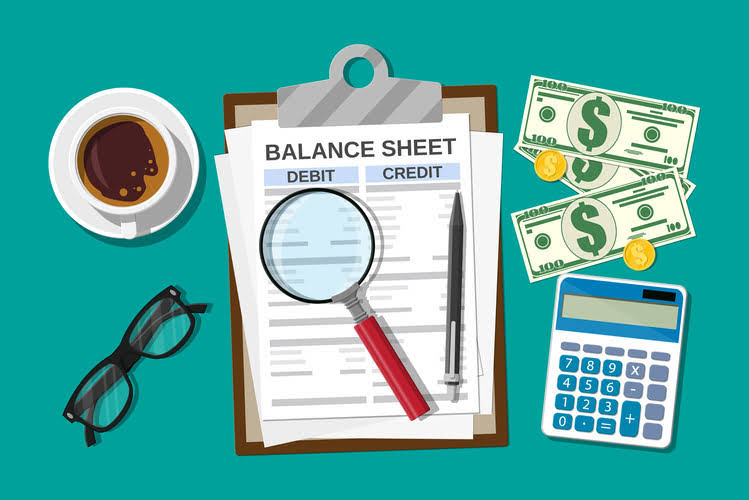A Guide To Credit Risk Management For Indian Banks

It was viewed as the natural consequence of poor judgment, speculative lending, or economic downturns. Lenders are using AI to automate their application, underwriting, and approval processes. Lenders can use the models to measure the credit risk of consumers who don’t qualify for traditional credit scores and automation to expedite the review process, leading to an improved customer experience. Conducting a credit analysis and evaluation credit risk definition process for each client takes time, effort, and resources. This can involve employee training to identify credit risks, investing in automated financial analysis systems, or creating a precise decision-making process. However, a solid foundation is needed to select the right client for financing.

The 3 Types of Credit Risk
Character refers to a borrower’s financial reputation and willingness to repay debts. Lenders assess character by reviewing credit history, past repayment behavior, and financial responsibility. A strong credit history with timely payments and responsible financial management indicates low risk, while missed payments or defaults suggest a higher likelihood of non-repayment. Credit risk assessment evaluates how likely a borrower—individual or business—is to default on a loan and estimates the lender’s potential loss. When lenders assess the risk of extending a loan to a business, they perform a credit risk analysis using several factors, including credit score, income level, and past loan history. The https://www.bookstime.com/ resulting credit risk score—also known as a risk profile—gives lenders important context around how likely the company is to pay back the loan.
Market Conditions
Furthermore, continuous training and diversification ensure that the strategy remains dynamic, allowing institutions to adapt to new risks and opportunities as they arise. Credit risk refers to the potential financial loss that may arise from the failure of a borrower or counterparty to fulfill their obligations to repay borrowed funds. In other words, it is the possibility that a borrower may default on a loan or fail to make payments as per the agreed terms.

Key performance indicators for credit risk

It also explains how credit risk is assessed and strategies used to reduce it. As per the news in September 2021, artificial intelligence is used to perform credit risk assessments. Hence, AI was introduced in this process to boost the bottom line and avoid costly defaults, enhancing better credit risk screening. The assessment informs about the customers’ reputation regarding credit and paying on time not just once but with a continued ability to do so. In that case, the borrower can decline to lend funds or offer trade credit to avoid potential loss.

A borrower with substantial capital is seen as less risky because they have additional financial buffers. Lenders favor borrowers with strong capital reserves, as it reduces the chances of default. Credit scoring models help lenders evaluate individual and corporate borrowers. These Statement of Comprehensive Income systems analyse historical data to determine borrowers’ ability to repay debt. Combining PD, EAD, and LGD into a single expected loss metric guides loan pricing, capital buffers, and approval limits. Paired with active monitoring and expert input, this framework helps lenders manage risk effectively and sustain profitable, resilient portfolios.
How to incorporate trend analysis into your credit risk assessment process?
- Models have to make assumptions that may not match reality when data points are missing.
- For example, if a company’s financial performance deteriorates or its debt level increases, it may be downgraded by Moody’s or Fitch.
- The credit spread denotes the difference between the yields of high-risk debt instruments and risk-free or low-risk debt instruments with the same maturity date.
- This risk is arising from the potential non performance, defective performance, delayed performance, or legally imposed alteration of an obligation owed under contract, statute, or other binding legal instrument.
- This approach gives clear ownership of data quality, sets standards, and puts controls in place to maintain integrity throughout the data’s life cycle.
- Credit risk management works best when it combines both the art of human judgment and the science of advanced technology.
- Credit risk comes in different forms, depending on the nature of the financial transaction.
Alternative data is becoming a great way to get insights, especially for people with limited traditional credit histories. Rental payments, utility bills, and telecom records can help predict repayment when traditional credit files are thin. Set up alerts for red flags such as late payments, covenant breaches, declining financial ratios, or negative news.
The traditional portfolio analysis is no longer viable to understand the complex factors that impact credit risk. It is one of the core reasons why lenders are using a more holistic approach to assess borrowers’ financial health. Doing so converts vast volumes of real-time customer behavioral financial data into valuable insights.
